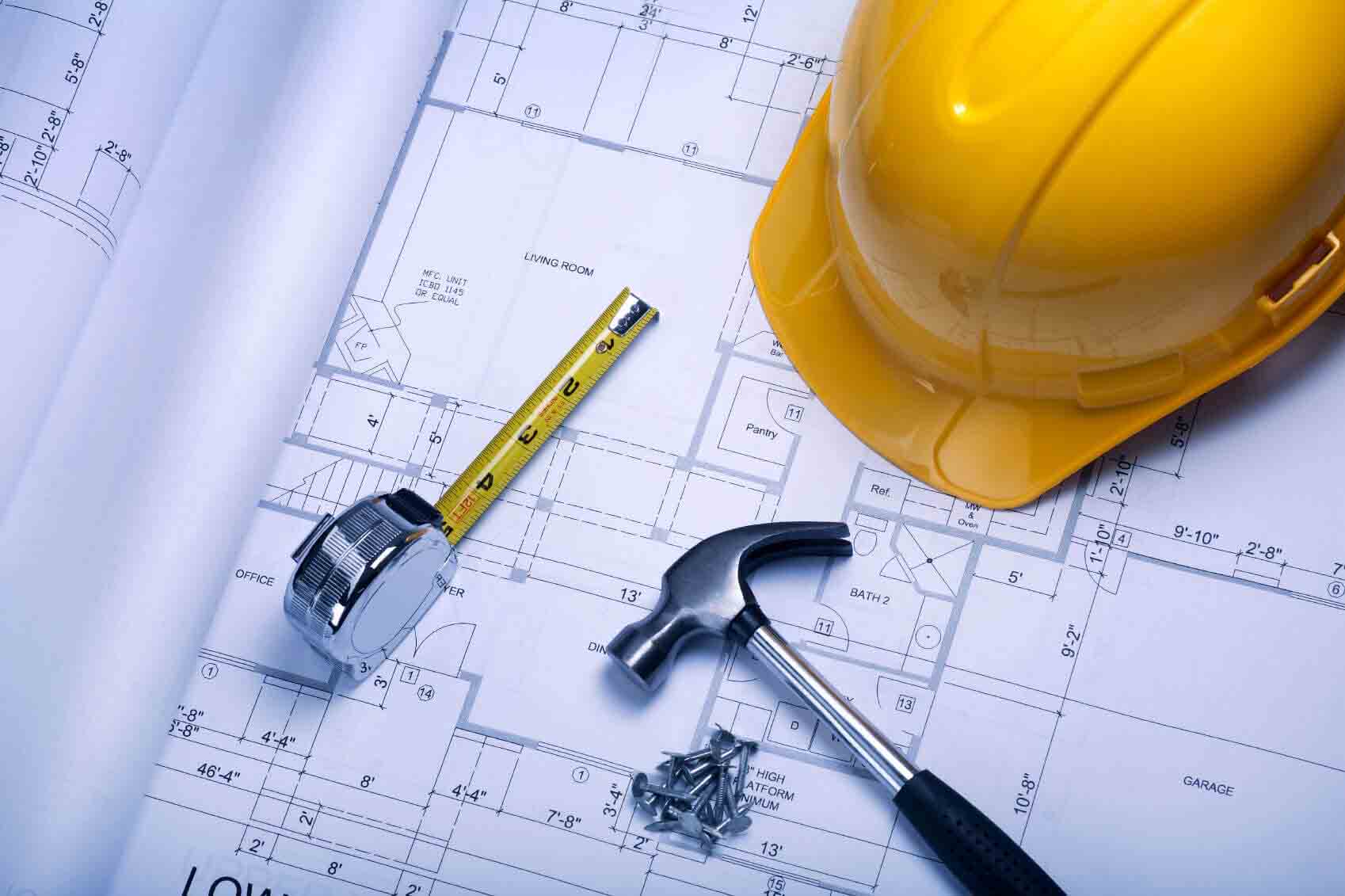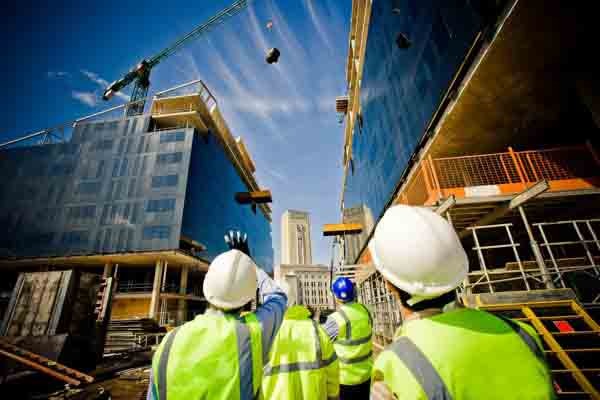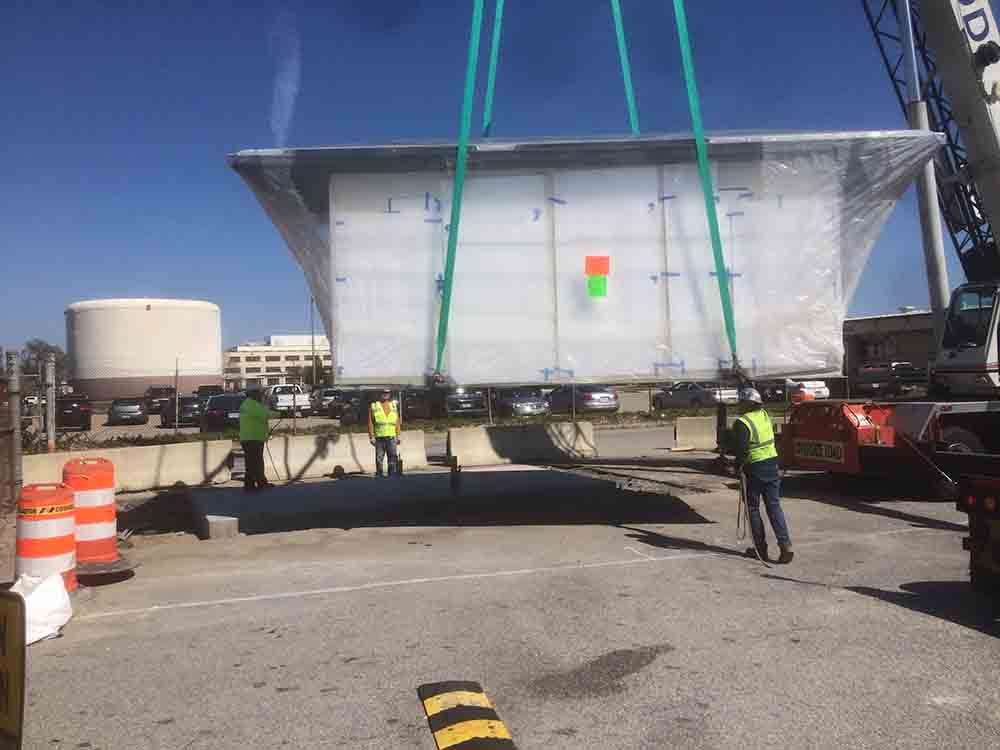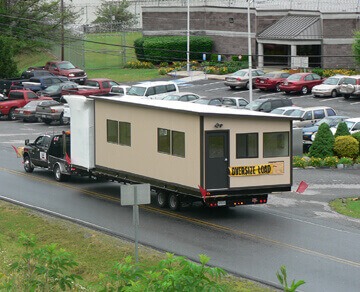Increasing Site Safety with Modular Construction
Blog
 The construction industry has to keep a constant eye on the overall safety and security of its employees due to the potential danger of all of their projects. No matter what the job, there can be a chance for accidents and injuries. In 2015, the construction industry had the highest number of fatal work injuries, 937, out of all other industry sectors, and 204,700 total injuries and illnesses. In fact, 21.4% of work-related deaths came from the construction industry.
Due to these alarmingly high numbers, it is in the best interest of the construction industry, construction companies, and the construction workers themselves to do whatever possible to lower these statistics and improve on-site safety.
For the industry itself, the reputation of stick-built construction hinges on it, resulting in fewer workers wanting to put their lives on the line. For the companies, they must pay high premiums on insurance and workers compensation to help the injured party. And for the workers themselves, they just want to stay safe. However, the problems still persist despite increasing safety regulations.
Looking at a typical construction site, it is easy to see all of the hazards and potential accidents that may occur. Between the heavy foot traffic and large amounts of giant machinery, as well as tons and tons of materials, there are just so many things that could go wrong. Here are some of the most common accidents reported from construction sites, named as the “Fatal Four” by OSHA and are responsible for 64.2% of construction worker deaths in 2015.
The construction industry has to keep a constant eye on the overall safety and security of its employees due to the potential danger of all of their projects. No matter what the job, there can be a chance for accidents and injuries. In 2015, the construction industry had the highest number of fatal work injuries, 937, out of all other industry sectors, and 204,700 total injuries and illnesses. In fact, 21.4% of work-related deaths came from the construction industry.
Due to these alarmingly high numbers, it is in the best interest of the construction industry, construction companies, and the construction workers themselves to do whatever possible to lower these statistics and improve on-site safety.
For the industry itself, the reputation of stick-built construction hinges on it, resulting in fewer workers wanting to put their lives on the line. For the companies, they must pay high premiums on insurance and workers compensation to help the injured party. And for the workers themselves, they just want to stay safe. However, the problems still persist despite increasing safety regulations.
Looking at a typical construction site, it is easy to see all of the hazards and potential accidents that may occur. Between the heavy foot traffic and large amounts of giant machinery, as well as tons and tons of materials, there are just so many things that could go wrong. Here are some of the most common accidents reported from construction sites, named as the “Fatal Four” by OSHA and are responsible for 64.2% of construction worker deaths in 2015.
The "Fatal Four" Accidents
Falls
Falls are the number one cause of construction industries and fatalities, and to look at it, it is easy to see why. For a construction worker, oftentimes the work that needs to be done occurs in an awkward or hard to reach area off the ground. Although falling from the roof is the most common example (and the most likely at 38.8%%) there are many other structures that can cause death, when fallen from. The next two most common causes are falls from ladders and falls from scaffolding. Overall, these falls are tough to completely eliminate with regulations alone, because accidents can happen regardless. Even falls from low heights can be dangerous with falls from less than 10 feet accounting for 20% of fatal falls.Struck by an Object
The second most common accident, being struck by an object cause 90 out of 937 fatal construction accidents in 2015. Struck injuries refer to “injuries produced by forcible contact or impact between the injured person and an object or piece of equipment.” As mentioned previously, construction sites have a great amount of foot traffic and plenty of heavy materials. Plus, a variety of equipment and materials can be knocked off a structure at any given point in time. Similar to falling accidents, struck by an object injuries are tough to eliminate completely because they often happen by chance, occur due to lack of attention to the work or surroundings, or by equipment failure. The main protection against these incidents are to stay away from operating machinery and being aware of your surroundings, but of course, these measures only go so far.Electrocution
The third most common fatal construction accident is electrocution. With 81 deaths in 2015, electrocution accounted for 8.6% of all fatal accidents that occurred. These types of accidents occur in three main categories: contact with power lines, contact with energized source, and improper use of an extension cord. Of the previous two, this type of hazard typically is prevented much more easily through the exercise of caution. Distancing yourself from energized sources and checking to ensure a wire is not live are two ways to drastically decrease your chance of an accident.Caught-In or -Between Hazards
The last of the fatal four, caught in or between hazard accounted for 67 or 7.2% of construction fatalities in 2015. From OSHA, “when the injury is created more as a result of crushing injuries between objects, the event should be recorded as Caught.” So, this can refer to as cave-ins, pulled into machinery, or crushed between two pieces of machinery.What Does Modular Construction Do to Help?
 Modular construction can provide a great amount of help to alleviate the problems and causes of the “Fatal Four” of construction sites.
First, modular construction takes place away from the construction site. This is significant for one major reason, a severe reduction in the amount of foot traffic occurring at the job site. The manpower that would have been needed in a condensed area is now taking place in another location freeing up space for the other workers. Due to this, there is a lot less chance of a person being caught-in-between or struck by an object.
Second, since the structure is indeed a module, workers have one large object to focus solely on rather than many moving parts. For all of our “Fatal Four,” lack of concentration on the hazard proves to be the main cause. With focus centralized on the modular structure, workers can focus on one thing at a time, during the installation of the module. Overall, these pre-assembled structures allow for much lower site disruption.
Third, the overall construction process is sped up compared to traditional, stick-built construction. With less time at the construction site, naturally, there is a lower risk of injury at the construction site. By finishing the project roughly 30% to 50% faster, construction workers will be spending far less time in a potentially hazardous situation, reducing the chance of all potential injuries.
Modular construction can provide a great amount of help to alleviate the problems and causes of the “Fatal Four” of construction sites.
First, modular construction takes place away from the construction site. This is significant for one major reason, a severe reduction in the amount of foot traffic occurring at the job site. The manpower that would have been needed in a condensed area is now taking place in another location freeing up space for the other workers. Due to this, there is a lot less chance of a person being caught-in-between or struck by an object.
Second, since the structure is indeed a module, workers have one large object to focus solely on rather than many moving parts. For all of our “Fatal Four,” lack of concentration on the hazard proves to be the main cause. With focus centralized on the modular structure, workers can focus on one thing at a time, during the installation of the module. Overall, these pre-assembled structures allow for much lower site disruption.
Third, the overall construction process is sped up compared to traditional, stick-built construction. With less time at the construction site, naturally, there is a lower risk of injury at the construction site. By finishing the project roughly 30% to 50% faster, construction workers will be spending far less time in a potentially hazardous situation, reducing the chance of all potential injuries.
Safety in a Modular Construction Environment
 Now, increasing safety at a construction site is worthless if the modular construction environment is not any safer. Luckily, modular construction boasts its own impressive safety practices.
First, and probably the most glaring difference to stick-built construction, modular construction takes place in a completely controlled factory environment. An assembly-line-like, work process is set up for the complete manufacturing of the building. All team members know their work area incredibly well, know the areas of caution, and are specialized in their duty. Because of this well-organized workflow process, there is much less chaos, meaning there is a far less chance of being struck by machinery, equipment, or other objects.
Second, and similarly to the first, the controlled environment keeps out any weather hazards that may present themselves in a traditional construction environment. With the process taking place indoors no rain delays or slippery surfaces should occur due to weather.
Third, thankfully in the modular construction process, there is no need for climbing to ridiculous heights to build each module. The typical height of or prefabricated modular is from 8 to 10 feet tall. This alone prevents a huge number of accidents that occur due to falling.
Now, increasing safety at a construction site is worthless if the modular construction environment is not any safer. Luckily, modular construction boasts its own impressive safety practices.
First, and probably the most glaring difference to stick-built construction, modular construction takes place in a completely controlled factory environment. An assembly-line-like, work process is set up for the complete manufacturing of the building. All team members know their work area incredibly well, know the areas of caution, and are specialized in their duty. Because of this well-organized workflow process, there is much less chaos, meaning there is a far less chance of being struck by machinery, equipment, or other objects.
Second, and similarly to the first, the controlled environment keeps out any weather hazards that may present themselves in a traditional construction environment. With the process taking place indoors no rain delays or slippery surfaces should occur due to weather.
Third, thankfully in the modular construction process, there is no need for climbing to ridiculous heights to build each module. The typical height of or prefabricated modular is from 8 to 10 feet tall. This alone prevents a huge number of accidents that occur due to falling.
 Finally, and most importantly, modular construction companies can more strictly regulate safety measures within their facility. In fact, according to “Safety Management in the Construction industry SmartMarket Report,” 73% of modular construction users have a fully inclusive safety program in place, in comparison to the 48% of their non-modularized counterparts.
Finally, and most importantly, modular construction companies can more strictly regulate safety measures within their facility. In fact, according to “Safety Management in the Construction industry SmartMarket Report,” 73% of modular construction users have a fully inclusive safety program in place, in comparison to the 48% of their non-modularized counterparts.
Overall, modular construction can provide a variety of advantages of stick-built, but perhaps the most important are the safety it provides the employees working on the project. The modular construction process itself sets up standardized workflows that encourage specialization and a full understanding of your duties and surroundings, allowing for far fewer accidents to occur in comparison to a typical construction site. Then when the structure is delivered to the project site, all that is left is installation. No matter what your industry, safety should always be your top priority. If you’re in need of a modular structure or would like to utilize modular construction as a part of your next construction job, contact us at info@panelbuilt.com or give us a call at 800.636.3873. We would love to help you with your project.